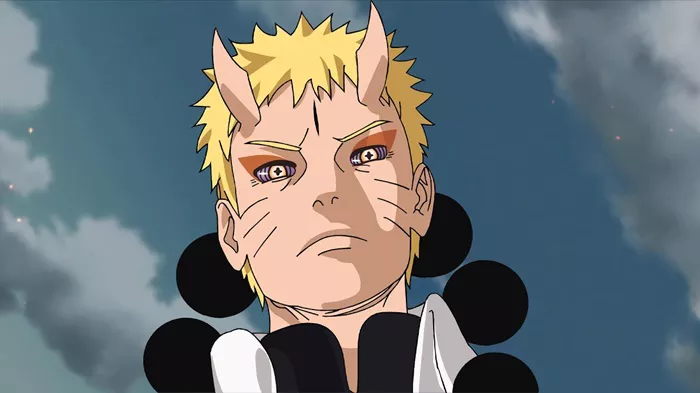Naruto Uzumaki, the protagonist of Masashi Kishimoto’s acclaimed manga and anime series Naruto, has been a central figure in discussions about the role of jinchūriki in the Naruto universe. A jinchūriki is a human host who harbors a tailed beast (Bijū) within them, granting them immense power but also subjecting them to significant burdens. This article explores the question of whether Naruto is still a jinchūriki, delving into the intricacies of his relationship with Kurama, the Nine-Tails Fox, and how this status affects his character and the broader narrative.
Understanding Jinchūriki in the Naruto Universe
Definition and Background
In the world of Naruto, jinchūriki are individuals who house one of the nine tailed beasts, or Bijū, within their bodies. These powerful creatures are classified by the number of tails they possess, ranging from the One-Tail (Shukaku) to the Nine-Tails (Kurama). The jinchūriki are often seen as weapons or tools by their respective villages, burdened with the responsibility and stigma of their contained beasts.
The Role of Jinchūriki in the Story
Jinchūriki play a critical role in the plot of Naruto. They are central to the series’ exploration of themes such as power, isolation, and the struggle for acceptance. Each jinchūriki has a unique relationship with their tailed beast, which affects their abilities, personality, and their place within their community. Naruto Uzumaki’s Journey as a Jinchūriki
Naruto’s Initial Status
Naruto Uzumaki, the host of Kurama, the Nine-Tails Fox, has been a jinchūriki since birth. His status as a jinchūriki is a fundamental aspect of his character, influencing his early experiences of loneliness and his drive to prove himself. The Nine-Tails’ attack on the Hidden Leaf Village and the subsequent sealing of Kurama inside Naruto create a complex dynamic between him and the beast.
Growth and Bonding with Kurama
Throughout the series, Naruto’s relationship with Kurama evolves significantly. Initially, the beast represents a source of immense power but also a constant threat. Naruto’s journey involves not only mastering the power of the Nine-Tails but also understanding and forging a bond with Kurama. This bond becomes one of mutual respect and understanding, which is pivotal in Naruto’s growth as a ninja and as a person.
The Transformation and Its Impact
A major turning point occurs when Naruto and Kurama fully synchronize their chakra, leading to transformations such as the Nine-Tails Chakra Mode. This transformation showcases Naruto’s mastery over Kurama’s power and highlights the deepening of their partnership. The transformation also plays a significant role in key battles and Naruto’s development as a character.
See Also: How Did Naruto Become an Uzumaki?
The Current Status of Naruto as a Jinchūriki
Post-Series Developments
In the aftermath of the Naruto series, particularly in the sequel series Boruto: Naruto Next Generations, Naruto’s status as a jinchūriki is revisited. The narrative continues to explore how his role as the host of Kurama impacts his responsibilities as the Seventh Hokage and his relationship with his family.
The Death of Kurama
A pivotal event in Boruto is the death of Kurama during a battle against Isshiki Ōtsutsuki. Kurama sacrifices himself to help Naruto, leading to a significant change in Naruto’s status as a jinchūriki. With Kurama’s death, Naruto no longer possesses the Nine-Tails within him, fundamentally altering his abilities and his identity as a jinchūriki.
The Aftermath and Implications
Following Kurama’s death, Naruto faces new challenges and opportunities. He must adapt to life without Kurama’s power while continuing to fulfill his role as Hokage. This transition signifies a new chapter in Naruto’s life, where he must rely on his own skills and growth rather than the power of the Nine-Tails.
Thematic and Narrative Implications
Identity and Personal Growth
Naruto’s journey as a jinchūriki is deeply intertwined with his personal growth. His development from a lonely, ostracized child to a powerful ninja and leader reflects broader themes of identity, acceptance, and self-discovery. Kurama’s death marks a significant shift in this journey, prompting Naruto to redefine himself beyond his role as a jinchūriki.
The Role of Power and Responsibility
The series explores the balance between power and responsibility through Naruto’s relationship with Kurama. As a jinchūriki, Naruto wields immense power but also bears the weight of responsibility. Kurama’s death challenges Naruto to navigate his role without the additional strength that the Nine-Tails provided, emphasizing the theme of self-reliance.
The Evolution of Relationships
Naruto’s bond with Kurama evolves from animosity to a deep, mutual respect. This evolution highlights the capacity for growth and change in relationships, even in the face of immense power and conflict. The shift in Naruto’s relationship with Kurama post-death reflects broader themes of adaptation and resilience.
Conclusion
Naruto Uzumaki’s status as a jinchūriki has been a defining aspect of his character throughout the series. From the early struggles and growth to the profound changes following Kurama’s death, Naruto’s journey as a jinchūriki is a rich and multifaceted narrative. The transformation from being a jinchūriki to facing life without Kurama underscores the themes of personal growth, responsibility, and identity that are central to the Naruto series. As Naruto continues to evolve beyond his role as a jinchūriki, his story remains a testament to the power of change and the enduring strength of the human spirit.


